Olympiastadion Berlin is the largest stadium in Germany, and it has a, somewhat, dark history to it since it was originally built for the 1936 Berlin Summer Olympics. That one where the Nazi Party decided to show what they were all about when it came to propaganda.
Nowadays, the stadium is the home ground of Hertha BSC, Berlin’s most famous football team. For me, all this history makes the Olympiastadion such an unusual place: the mixture of its dark history and its brilliant present. This is why a visit to the Olympiastadion is such an interesting one.
I have been to the Olympiastadion a few times since a few of my Brazilian friends came to Berlin. I always want to see this beautiful stadium in West Berlin. But I also went there to see Hertha’s plays; it was as fun as you can imagine. Even if Hertha lost, it was still one of my favorite football experiences in Germany.
But, before I talk more about my personal experience at the Olympiastadion, let me tell you some of the histories of the place.

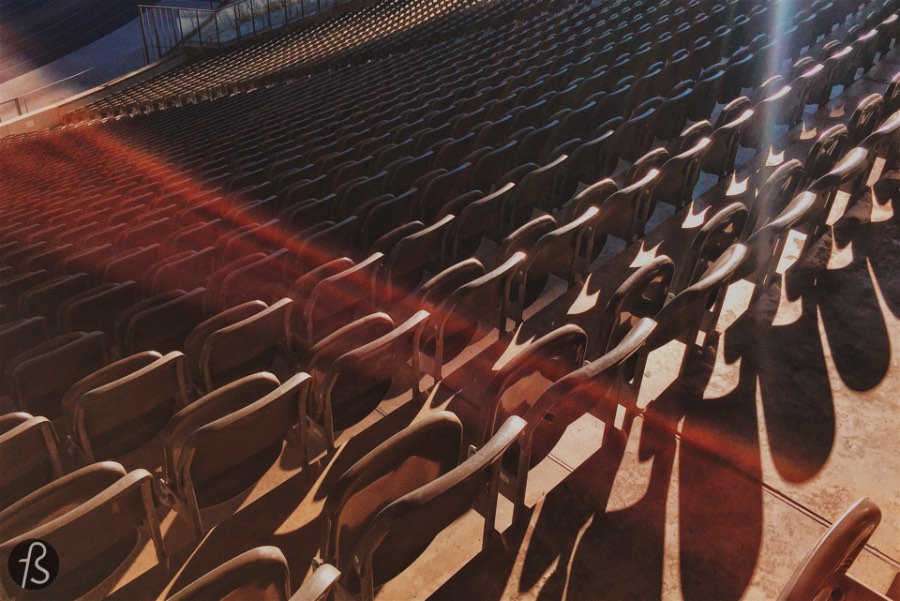
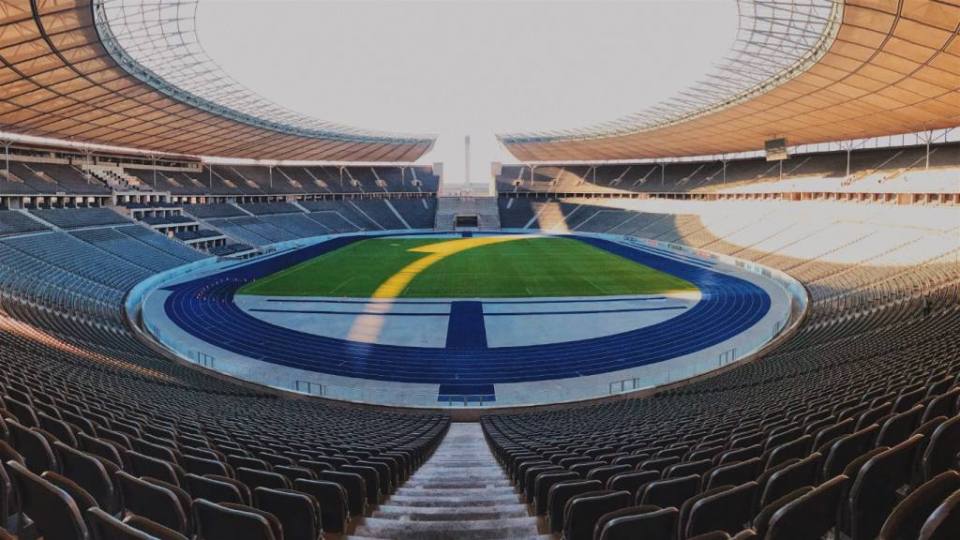
A little bit of the history behind Olympiastadion Berlin
We have to go back to the 1912 Summer Olympics, which happened in Stockholm, to inform the story for a start. Then, the International Olympic Committee designated Berlin as the host of the 1916 Summer Olympics. Germany proposed a stadium for this event in Grunewald, where a horse racing course already existed. However, none of this has happened since the games were canceled due to the First World War.
Everything changed in 1931 when the International Olympic Committee made Berlin the official host city of the 11th Summer Olympics. Now, the city needed a stadium once again. But not just an arena; Berlin needed a sports complex that would make this the best Olympic Games ever. This was the thought of the Nazi Party when they came to power in 1933. Hitler and his men wanted to use the Olympic Games as propaganda for their cause, and this is what they did.
Adolf Hitler ordered the construction of the Olympiastadion as a great sports complex in the Reichssportfeld. This sports complex was designed by architect Werner March and assisted by his brother Walter. Construction took place over two years, from 1934 and 1936, and when it was finished, the Reichssportfeld was 1.32 square kilometers and consisted of the Olympiastadion, the Maifield, and the Waldbühne amphitheater as the main buildings. However, the complex also hosted buildings and facilities for swimming, field hockey, and equestrian events.
What I like about the Olympiastadion is how Werner March designed it as a buried stadium. So, from the outside, the stadium looks smaller than from the inside. It’s a fascinating effect caused by the fact that it was built 12 meters below ground level. But don’t think that the Olympiastadion is small in any way. When it was built, the stadium reached 110,000 spectators! Today, it has space for 74,475, and that is still a huge
During the Berlin Summer Olympics in 1936, the Olympiastadion was the stage for Jesse Owens and his four gold medals in the long jump and sprint events. This made him the most successful athlete in Berlin and also, proof that Hitler’s race dogma couldn’t be more wrong.
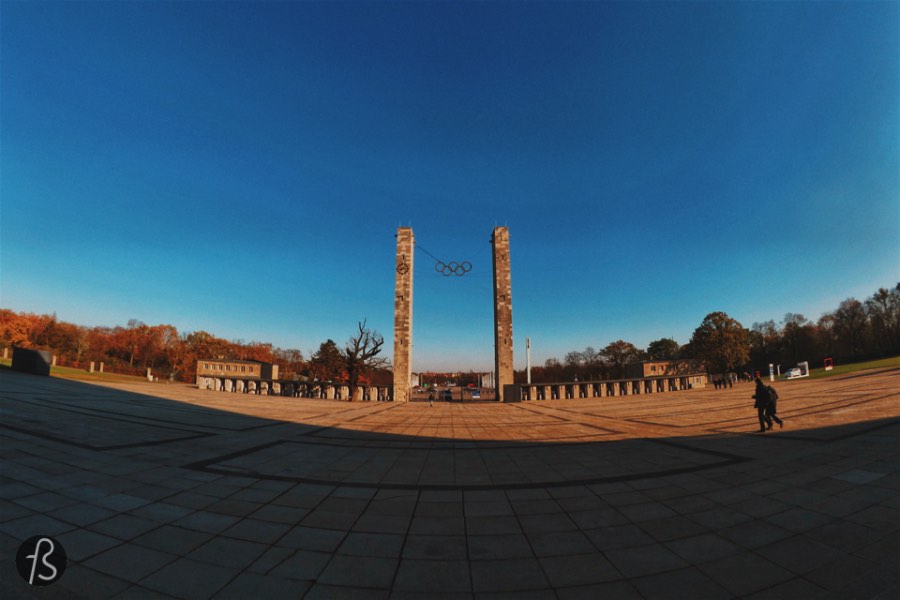

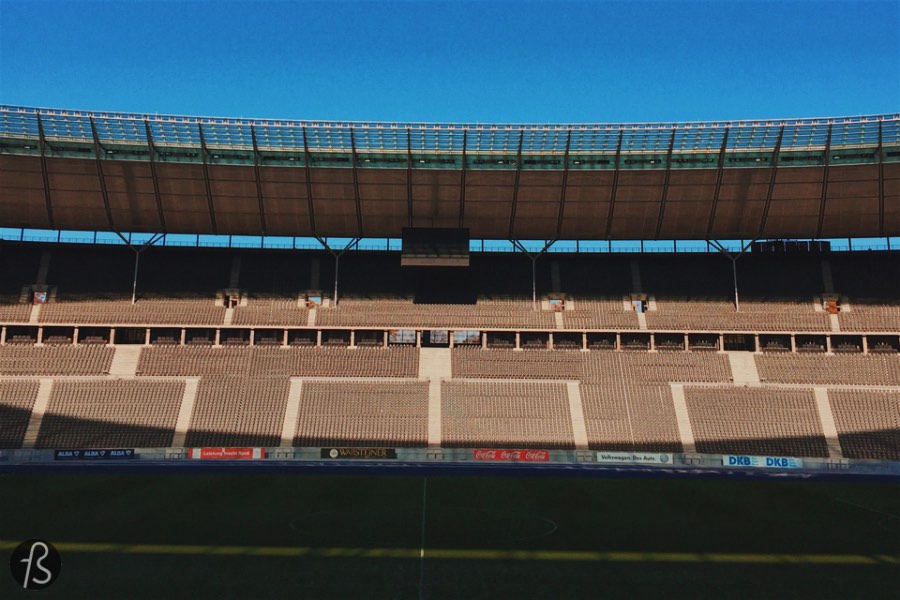
The Olympiastadion Berlin after the Second World War
Then, the Olympic Games came to an end, and the stadium stood there during the Second World War, and it was used by the Allied Troops as a reference point to the Berlin bombings. After the war, the entire Reichssportfeld became the headquarters of the British Army and its occupation forces.
During the British and Allied occupation of Berlin, the German Reichssportfeld complex was used by the American and British troops for various events. The Maifield was used until 1994 as the place for the Queen’s Official Birthday. In the 1960s, the American military forces and some high school football teams used the stadium to introduce Berliners to American football. Hertha as the football team using the stadium in the Bundesliga, the German football league.
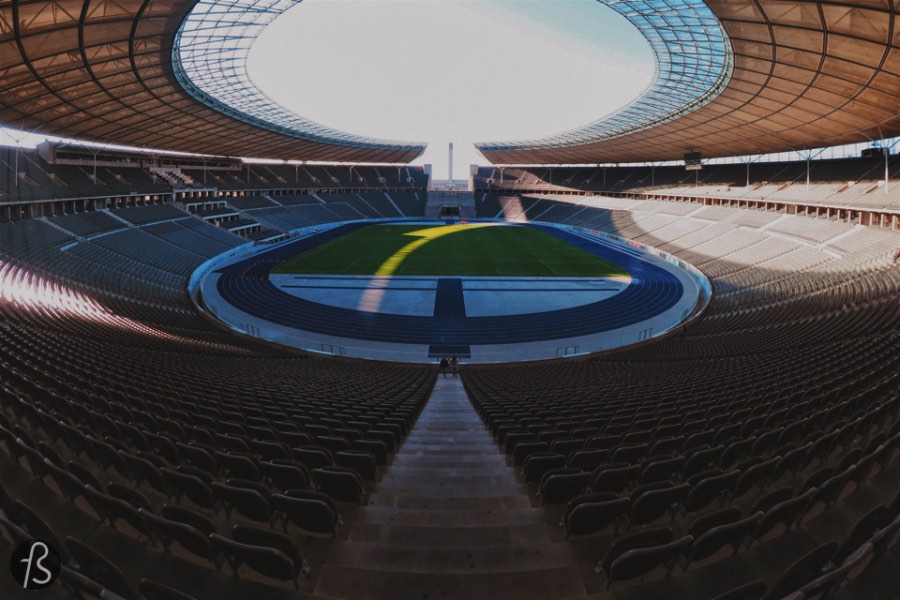
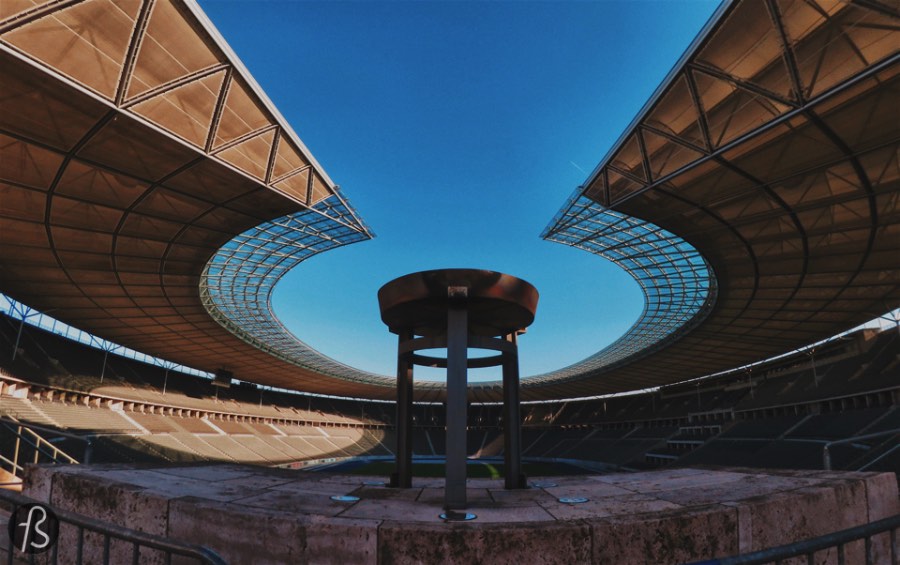
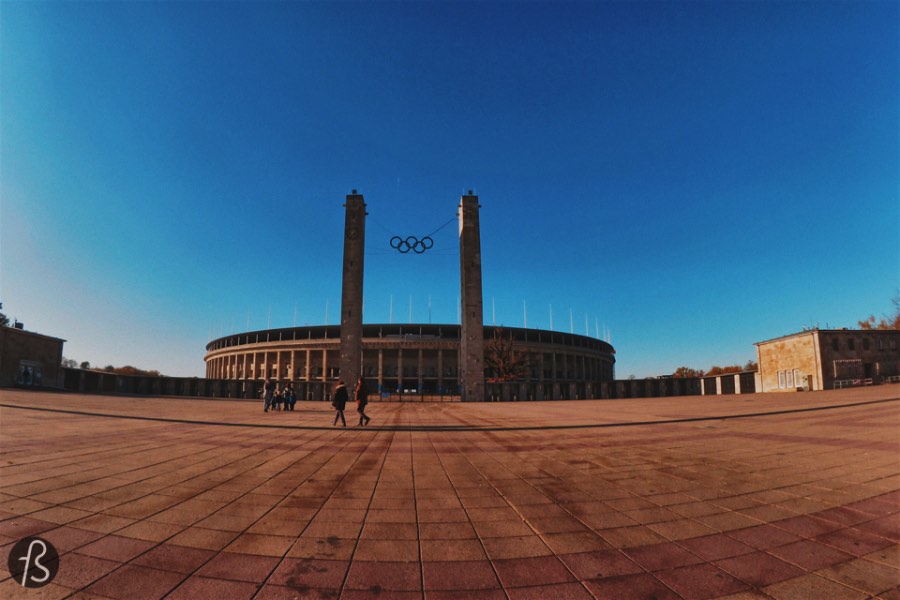
The Olympiastadion Berlin Today
When the British Military forces left Berlin, the city started a debate about what should be done with the Olympiastadion since its history represented a Germany that most people would like to forget. Some people wanted to tear down the stadium and build a new one in the same place.
Others wanted to renovate it and make it something that Berlin would be able to be proud of. Some wanted to leave it like it was and let it decay and rot slowly as it would turn into something like a Berlin Colosseum. Which sounds like the craziest idea for me, but it has an interesting point. But, as you can imagine, renovation was the chosen idea.
Before the 2006 FIFA World Cup in Germany, FIFA decided to make the Olympiastadion one of its venues. Restoration work started soon after, and, in July 2000, renovation work began and lasted until July 2004. The re-inauguration celebrations continued for an entire month, beginning with a party featuring Pink and Nena.
On the second day, there were friendly matches between Hertha and visiting teams. But none of this matters much to me. The main event came later when, in September 2004, Brazil played Germany as the first big international match at the new Olympiastadion. It was the first match between the two countries since Brazil won the 2002 FIFA World Cup in Japan against Germany, and the game ended up in a tie, with one goal for each team.
This wasn’t the only notable event at the Olympiastadion during its long history, as you can imagine.
- Usain Bolt broke the 100m and 200m world records at the 2009 World Championships in Athletics.
- The world record for attendance at a baseball game also happened there during the 1936 Summer Olympics.
- Berlin Thunders, an American football team for NFL Europa, used the stadium for four years, starting in 2003 and ending with the league shutting down.
- The Olympic Games 1936 were the first to be broadcast on TV, with 25 viewing spaces around Berlin and Potsdam.
- At the 1974 FIFA World Cup, the stadium was used for three matches from group A. West Germany, Chile, East Germany, and Australia played there, but the historical match between both German teams happened in Hamburg.
- In 2006, the final FIFA World Cup match between Italy and France arrived at the Olympiastadion. When you think about Zinedine Zidane headbutting Marco Materazzi, you are thinking about the Olympiastadion in Berlin!
- The stadium also appeared in movies like the Cold War era movie The Quiller Memorandum from 1966 which you can watch in the trailer below.
When you visit the stadium, don’t forget to pay attention to the unique stand built for Adolf Hitler and his political party. It’s quite a unique feature, and it aligns with the Olympischer Platz and Maifield in the back with the Olympic Flame in front of it.
Also, try to look for the Olympic Bell that lays cracked and survived the Bell Tower fire after the Second World War and its incapable of sound since then.
Tours and how to arrive at the Olympiastadion Berlin
Now that you have more than enough reasons to visit the Olympiastadion in Berlin, you should know that several tours are being provided there. There is one focused on Hertha’s history, another one focused on the technology behind the stadium and one that shows you the highlights of it. For more information about the tours, you need to visit the official Olympiastadion website and take a look there.
Arriving at the Olympiastadion is simple since there is a U-Bahn station close by. Also, there is an S-Bahn station there, and it’s the fastest way to get there from Alexanderplatz and Mitte.
Why do you need to visit the Olympiastadion Berlin!
Olympischer Platz 3, 14053
Berlin, Germany